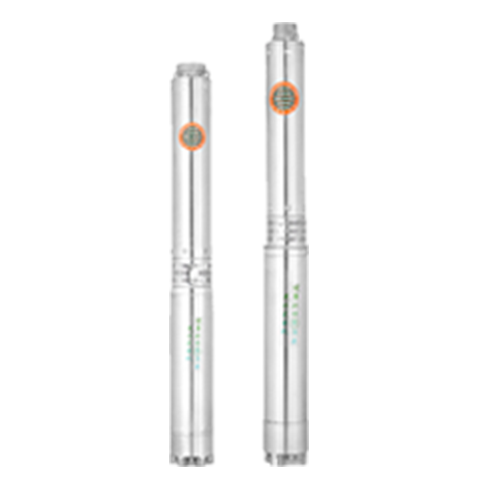Aug . 09, 2024 02:40 Back to list
Choosing the Right 220 Volt Submersible Well Pump for Your Water Supply Needs
Understanding 220 Voltage Submersible Well Pumps
In recent years, the use of submersible well pumps has surged, particularly in agricultural, industrial, and residential applications. One prominent type of these pumps operates on a 220-volt power supply, making them efficient for deep water extraction and irrigation systems. This article explores the functionality, advantages, and maintenance of 220-volt submersible well pumps.
What is a Submersible Well Pump?
A submersible well pump is a device designed to be submerged underwater to lift water from deep wells. Unlike traditional pumps that sit above the ground, submersible pumps are hermetically sealed and operate efficiently underwater. They are primarily used in applications where water needs to be sourced from depths greater than 25 feet.
The 220-volt variant is particularly popular due to its ability to handle higher power loads, making it suitable for deeper or more demanding applications. These pumps typically consist of a motor and a pump shaft that draws water into the unit and pushes it up to the surface through a discharge pipe.
Advantages of 220-Volt Submersible Pumps
1. Efficiency A 220-volt submersible pump can deliver a high flow rate while consuming less energy compared to its lower voltage counterparts. This efficiency results in lower electricity bills for consumers using the pump regularly.
2. Durability These pumps are designed to endure harsh environments. Their sealed construction protects the motor from water damage, corrosion, and contaminants, resulting in a longer operational lifespan. This durability makes them ideal for agricultural usage, where they often encounter varied water conditions.
220 volt submersible well pump

3. Space-Saving Design Because submersible pumps are placed directly in the water, they do not require bulky above-ground installations. This helps conserve space and minimizes installation complexity, particularly in remote areas.
4. High Performance A 220-volt pump can achieve higher lifting capacities, making it suitable for deep wells. This capability allows them to extract water from greater depths, which is essential in regions where groundwater levels are significantly below the surface.
5. Quiet Operation Submersible pumps operate with less noise compared to external pumps. This feature is particularly beneficial for residential applications where noise pollution can be a concern.
Installation and Maintenance
Installing a 220-volt submersible well pump involves several steps, starting with selecting an appropriate pump size and type based on the water needs and the depth of the well. Proper installation is crucial and often requires professional assistance to ensure compliance with electrical and safety standards.
Maintenance is essential for the longevity of the pump. Regularly checking for signs of wear, such as unusual noises or vibrations, is vital. Additionally, inspecting the power supply and electrical connections helps prevent potential failures. Keeping the well and surrounding areas clean and free from debris can also prolong the pump's operational effectiveness.
Conclusion
220-volt submersible well pumps offer a reliable and efficient solution for extracting water from deep wells. Their durability, efficiency, and quiet operation make them an excellent choice for various applications, from agriculture to residential use. By understanding their functionalities and ensuring proper installation and maintenance, users can maximize the benefits of these pumps for years to come. Whether one is looking to irrigate a farm, supply water to a household, or meet industrial demands, investing in a 220-volt submersible well pump can prove to be a sound decision.
-
Submersible Water Pump: The Efficient 'Power Pioneer' of the Underwater World
NewsJul.01,2025
-
Submersible Pond Pump: The Hidden Guardian of Water Landscape Ecology
NewsJul.01,2025
-
Stainless Well Pump: A Reliable and Durable Pumping Main Force
NewsJul.01,2025
-
Stainless Steel Submersible Pump: An Efficient and Versatile Tool for Underwater Operations
NewsJul.01,2025
-
Deep Well Submersible Pump: An Efficient 'Sucker' of Groundwater Sources
NewsJul.01,2025
-
Deep Water Well Pump: An Efficient 'Sucker' of Groundwater Sources
NewsJul.01,2025
-
 Submersible Water Pump: The Efficient 'Power Pioneer' of the Underwater WorldIn the field of hydraulic equipment, the Submersible Water Pump has become the core equipment for underwater operations and water resource transportation due to its unique design and excellent performance.Detail
Submersible Water Pump: The Efficient 'Power Pioneer' of the Underwater WorldIn the field of hydraulic equipment, the Submersible Water Pump has become the core equipment for underwater operations and water resource transportation due to its unique design and excellent performance.Detail -
 Submersible Pond Pump: The Hidden Guardian of Water Landscape EcologyIn courtyard landscapes, ecological ponds, and even small-scale water conservancy projects, there is a silent yet indispensable equipment - the Submersible Pond Pump.Detail
Submersible Pond Pump: The Hidden Guardian of Water Landscape EcologyIn courtyard landscapes, ecological ponds, and even small-scale water conservancy projects, there is a silent yet indispensable equipment - the Submersible Pond Pump.Detail -
 Stainless Well Pump: A Reliable and Durable Pumping Main ForceIn the field of water resource transportation, Stainless Well Pump has become the core equipment for various pumping scenarios with its excellent performance and reliable quality.Detail
Stainless Well Pump: A Reliable and Durable Pumping Main ForceIn the field of water resource transportation, Stainless Well Pump has become the core equipment for various pumping scenarios with its excellent performance and reliable quality.Detail
